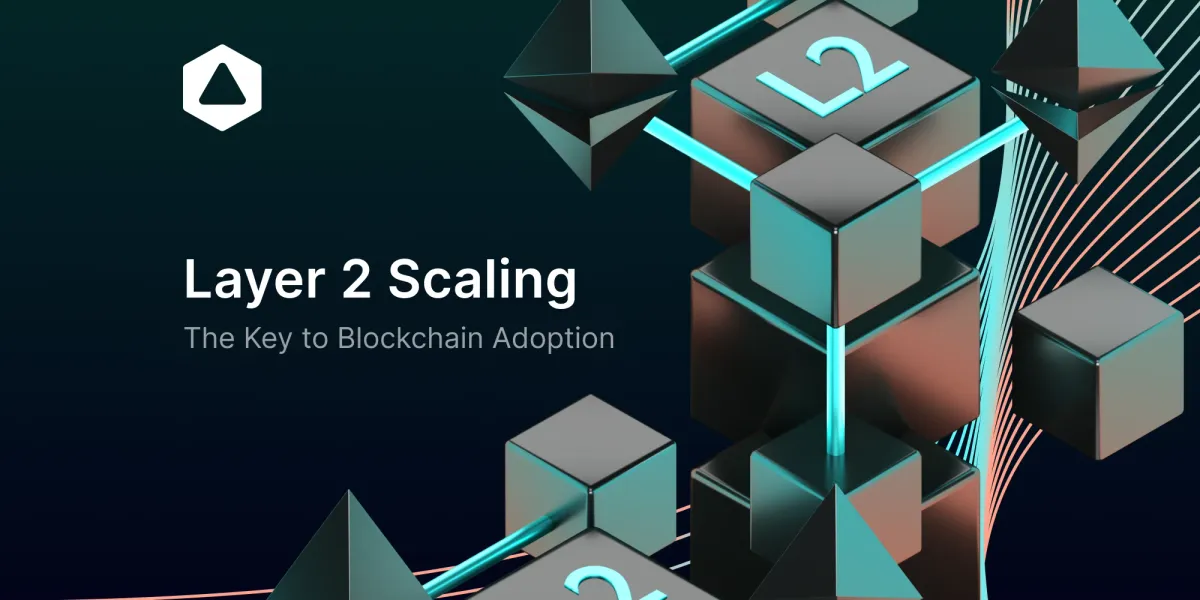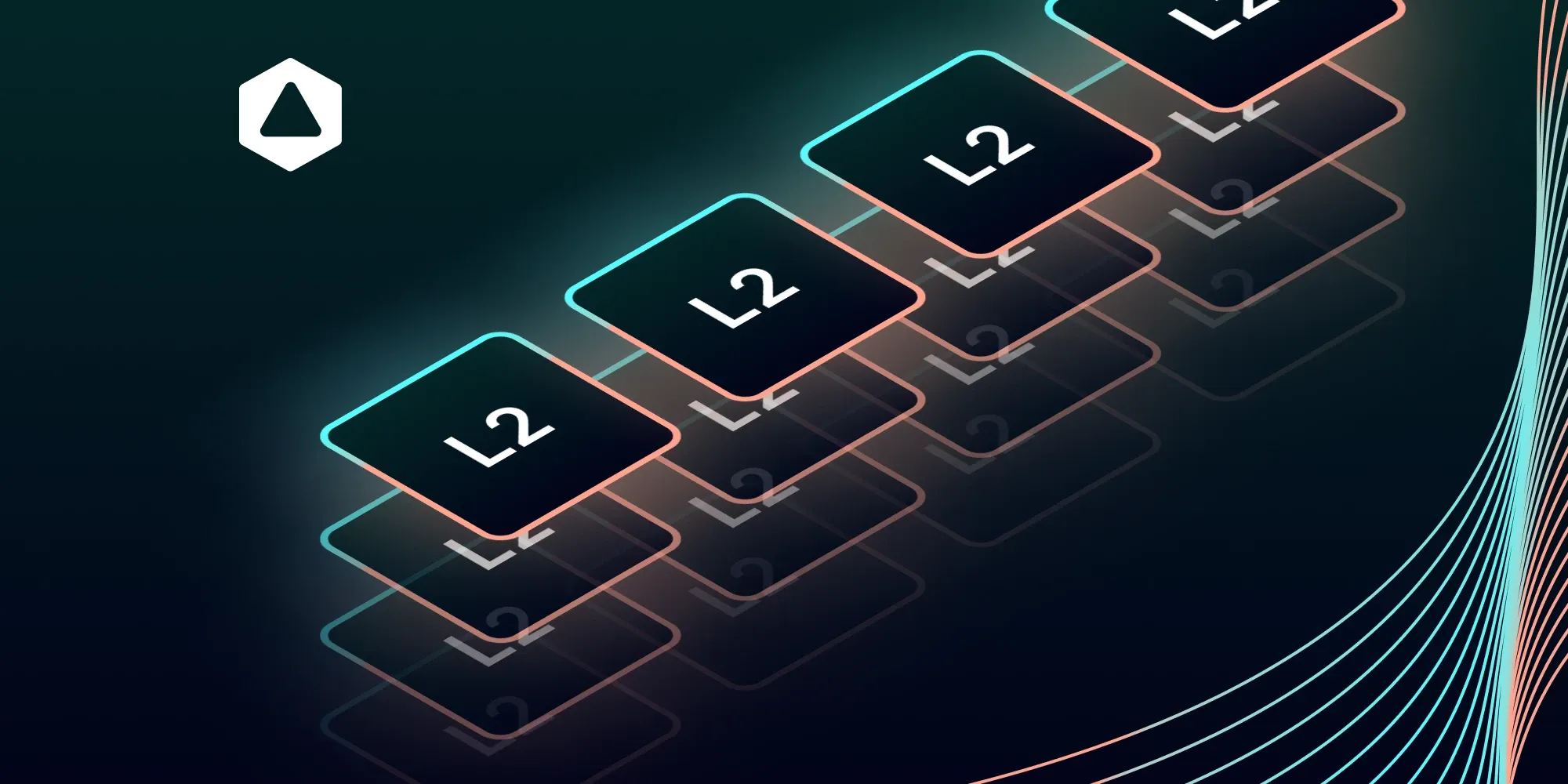Layer 2 Scaling: The Key to Blockchain Adoption
This article discusses the importance of layer 2 scaling solutions for Ethereum's growth, explaining how rollups and other approaches can provide scalability while maintaining the network's security. It highlights the need to understand the different layer 2 options available...

As blockchain and cryptocurrency adoption continues to grow, the need for faster and more cost-effective solutions has become increasingly apparent. Ethereum, the second-largest cryptocurrency by market capitalization, has been at the forefront of this challenge, with its existing infrastructure facing limitations in terms of scalability and high transaction fees.
To address this issue, developers have been working on Ethereum layer 2 scaling solutions that aim to improve network performance without compromising security or decentralization. In this article, we will explore the different types of layer 2 solutions and their pros and cons and what is possible with blockchain technology.
The Main Blockchain Scalability Problem
Blockchains currently have limited transaction throughput, typically around 15 transactions per second (TPS), compared to VISA's 24,000 transactions per second (TPS), which is completely centralized. So attempting to increase throughput manually can lead to centralization of block production, as only a few nodes can handle the higher transaction volumes. A solution is thus needed if the network wants to expand to a global network, while preserving decentralization and security.
This is known as the "blockchain trilemma," where it is difficult to scale a blockchain while preserving decentralization and security.
The Ethereum Virtual Machine - EVM
The EVM, short for Ethereum Virtual Machine, enables developers to create smart contracts on Ethereum-based blockchains, providing more advanced functionality for contracts compared to traditional blockchain systems. This expanded capability introduces an opportunity for new layers that can build on the base EVM to achieve new functionality.
Layer 0, Layer 1 and Layer 2 Blockchains
Layer 0 protocols enable interactions between Layer 1 blockchains, which are the primary blockchain networks like Bitcoin, Ethereum, and DFINITY. In contrast, Layer 2 solutions aim to extend Layer 1 networks to improve scalability while maintaining a high level of security.
To address this challenge, developers have created Layer 2 scaling solutions that handle transactions off-chain, allowing for increased transaction throughput without compromising the integrity of the core chain.
Layer 2 solutions process transactions outside of Ethereum (Layer 1) and then submit compressed data back to the chain, offloading transaction volume. Multiple layer 2 solutions can operate simultaneously, significantly increasing Ethereum's transaction capacity while maintaining its decentralized architecture and security.

The Different Types of Layer 2 Scaling Solutions
There are several approaches to Ethereum layer 2 scaling, we’ll take a look at the most popular ones…
Rollups - Bundling Transactions for Efficiency
Rollups are a type of layer 2 scaling solution that combines many transactions into one, improving efficiency. They work by "rolling up" transactions into a single block, similar to rolling up papers to fit more into a backpack. There are two main subcategories of rollups: ZK Rollups and Optimistic Rollups.
ZK Rollups
ZK Rollups validate transactions using mathematical proofs, making them arguably more secure than other rollup solutions. By bundling transactions mathematically, ZK rollups can process transactions very quickly. However, they currently offer limited accessibility and do not support smart contracts.
Optimistic Rollups
Optimistic Rollups, on the other hand, are a type of layer 2 scaling solution that combines many transactions into one, improving efficiency. They work by "rolling up" transactions into a single block. This approach enables Ethereum to scale without compromising security. Optimistic rollups rely on a challenge period rather than mathematical proofs. Transactions are processed off-chain and only posted to Ethereum if disputed during the challenge period.
Sidechains - Secondary Blockchains
Sidechains are separate blockchains that run parallel to the main chain and process transactions to relieve congestion. Examples of Ethereum sidechains include Polygon and xDai. Unlike some Layer 2 solutions, sidechains like Polygon operate independently with their own consensus mechanism, but they still batch transactions to the main Ethereum chain.
While other Layer 2 solutions rely on the main chain's security, sidechains have their own security measures in place. The main difference between sidechains and Layer 2 solutions is that sidechains are separate blockchains, while Layer 2 solutions extend the capabilities of the main chain. This distinction suggests that sidechains are not "true" Layer 2 solutions.
Pros
- Easy to access by depositing and withdrawing assets to the sidechain
- Can offload many transactions from the main Ethereum chain, significantly improving scalability
Cons
- Operate on their own rulesets, which could potentially reduce the level of security relative to the Ethereum network.
- May be less decentralized and more vulnerable to censorship than the main Ethereum chain because sidechains rely on their own consensus mechanisms instead of Ethereum's proof-of-work.
Plasma - Child Chains and Parent Chains
Plasma is a layer 2 scaling solution that uses "child chains" to process transactions, periodically updating the main Ethereum chain via Merkle proofs. While conceptually similar to sidechains, Plasma differs in important ways. It is well-suited for payments and non-fungible tokens (NFTs) due to its design.
However, if many users exit from the child chain to the main Ethereum chain at once, it could cause congestion on Layer 1. Additionally, Plasma has more limited functionality compared to sidechains, so it's important to consider Plasma's limitations carefully before implementing it.
The Future with Ethereum Rollup-Centric Scaling
One potential outcome of layer 2 scaling solutions like rollups is that a particular rollup could handle up to 10,000 transactions per second (TPS) and become a magnet for liquidity and the preferred place for performing transactions.

However, it is also possible that no single rollup dominates, with many rollups each processing a few hundred TPS. In this scenario, the Ethereum base layer would still provide security for the entire ecosystem, achieving full decentralization and censorship resistance. The future remains uncertain, and the market will ultimately decide which layer 2 solutions gain the most adoption and where most activity occurs.
Researching L2’s
If you want to learn more about Layer 2s and their applications, we recommend visiting L2BEAT, which provides an overview of Ethereum layer 2 solutions, allowing you to compare features like:
- Total Value Locked (TVL) - The total value of crypto assets deposited in each layer 2.
- Token breakdown - The different tokens utilized on each layer 2.
- 7-day TVL change - Whether TVL has increased or decreased recently.
- Market share - The percentage of total layer 2 TVL held by each solution.
- Purpose - The main use case for each layer 2 such as NFTs, DeFi, etc.
- Technology - The technical approach used by each layer 2 like optimistic rollups.

The information on L2BEAT helps you understand the adoption of each layer 2 solution and create a more detailed risk profile for different projects.
Conclusion
Layer 2 scaling solutions are crucial for Ethereum's future growth by providing scalability while leveraging the chain's security. To capitalize on these innovations, it's important to understand the different approaches and key layer 2 projects. Each solution caters to specific needs, so understanding the variety of options available can help developers scale blockchains efficiently and effectively. A thorough knowledge of layer 2 technologies will be instrumental for blockchain developers moving forward.

Connect with Bitfinity Network
Bitfinity Wallet | Bitfinity Network | Twitter | Telegram | Discord | Github

*Disclaimer: While every effort is made on this website to provide accurate information, any opinions expressed or information disseminated do not necessarily reflect the views of Bitfinity itself.


Comments ()